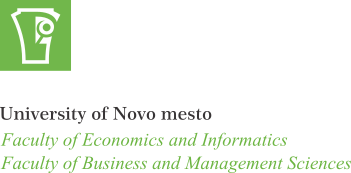Knowledge Transfer in a Learning Organization
DOI:
https://doi.org/10.55707/eb.v8i1.11Keywords:
learning organization, learning, knowledge management, knowledge transfer, benchmarkingAbstract
The everyday struggle for survival on the market is the main reason for the development of a learning organization. Only the most enduring and persistent organizations can keep up with the fast pace of life and change. The change from a classic to a learning organization can be a long-lasting process. The importance of intellectual capital, e.g. the knowledge of its employees, is not unbeknownst to learning companies, which is why they are continuously searching for new methods of knowledge management, which is as important as rational money spending, human resources and raw materials. Considering all of the above, the most important source of value for the company comes from its employees. Employing their creativity and mindset, they are working in different teams which are innovatively adjusting to the ever-changing environment and enabling continuous learning and development. The article defines the concept of a learning organization, presents its characteristics, and describes its learning process. Later on, we define knowledge management, which includes the process of managing, generating and saving knowledge; further chapters describe the importance of the transfer and usage of knowledge in the company. We have also described the five ways of knowledge transfer: serial transfer, close transfer, remote transfer, strategic transfer and professional transfer. The last thing mentioned are the changes brought about by knowledge transfer in a learning organization.
References
Andolšek, S. (2011). Prenos znanja skozi perspektivno teorijo družbene menjave. Ljubljana: Fakulteta za družbene vede.
Argote, L. (2013). Organizational learning: creating, retaining and transferring knowledge. New York: Springer.
Černelič, M. (2007). Procesi pridobivanja, uporabe, prenosa in hranjenja znanja v podjetju. Maribor: Založba Pivec.
Dermol, V. (2010). Vplivi usposabljanj na učenje v podjetju in na njegovo uspešnost. Celje: Mednarodna fakulteta za družbene in poslovne študije.
Dimovski, V. in sod. (2005). Učeča se organizacija: ustvarite podjetje znanja. Ljubljana: GV Založba.
Dimovski, V. in sod. (2009). Avtentično vodenje v učeči se organizaciji. Ljubljana: Planet GV.
Grintal, B. (2011). Organizacija in menedžment podjetja. Ljubljana: Zavod IRC.
Ivanko, Š. (2015). Teorija organizacije. Ljubljana: Fakulteta za upravo.
Kejžar, A. (2011). Organizacija in tehnike vodenja. Ljubljana: Zavod IRC.
Law, K. and Chuach, K. (2020). Project Action Learning (PAL) Guidebook: Practical Learning in Organizations. Cham: Springer.
Morgan, G. (2004). Images of organization. Ljubljana: Fakulteta za družbene vede.
Možina, S. (2014). Pomen znanja kot sestavine intelektualnega kapitala in udeležba zaposlenih pri dobičku. Maribor: Založba Pivec.
Ortenblad, A. (2019). The Oxford Handbook of the Learning Organization. United Kingdom: Oxford University Press.
Raos, M. (2010). Jadranje po nemirnih vodah managementa nevladnih organizacij. Koper: Fakulteta za management.
Raspor, A. and Nežič, M. (2019). Dolgoročni razvoj sodelavcev in podjetja. Dolga Poljana: Perfectus.
Rupčić, N. (2019). Learning organization–organization emerging from presence. Rijeka: Department of Economics and Business.
Šinkovec, S. (2015). Učeča se organizacija kot konkurenčna prednost. Ljubljana: Ekonomska fakulteta.
Škerlavaj, M. (2009). Organizacijsko učenje kot dejavnik spodbujanja uspešnosti poslovanja slovenskih in hrvaških podjetij. Ljubljana: Ekonomska fakulteta.
Uršič, D. and Nikl, A. (2004). Učeča se organizacija: organizacijsko–sistemski vidik. Maribor: Management Forum.
Wellman, L. J. (2009). Organizational learning: how companies and institutions manage and apply knowledge. New York: Palgrave Macmillan.
Downloads
Published
How to Cite
Issue
Section
License
Copyright (c) 2022 Journal of Economic and Business Sciences

This work is licensed under a Creative Commons Attribution 4.0 International License.




